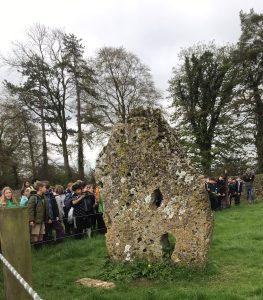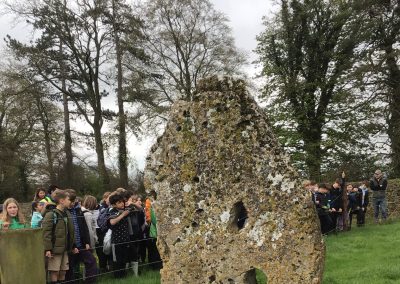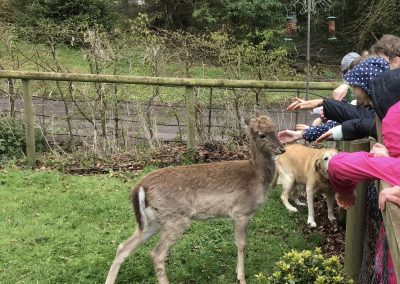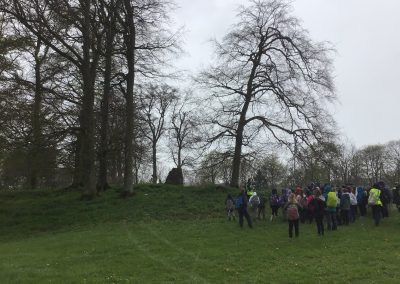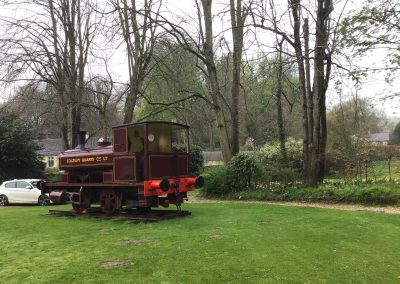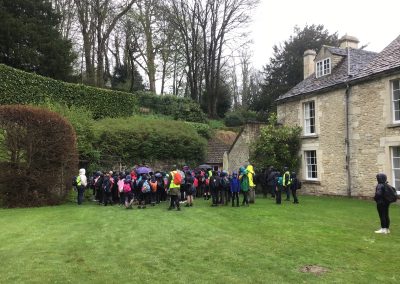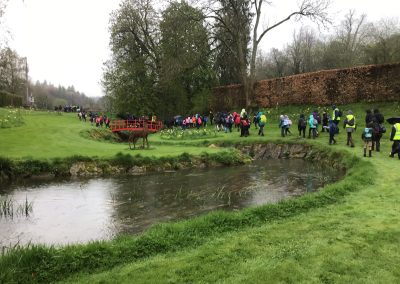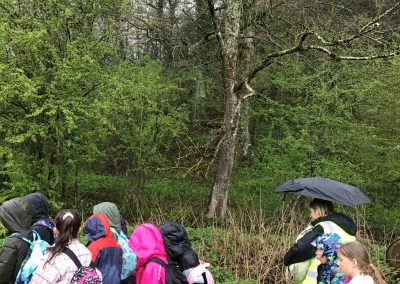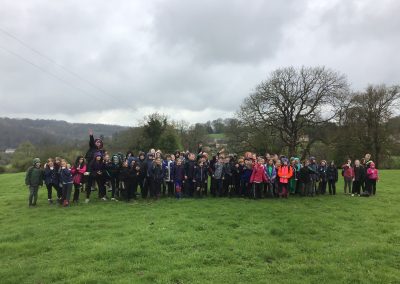Dear Parents/ Carers,
‘On Monday (little bit rainier than Tuesday) we went on a 6 mile walk through Princess Anne’s estate and across to Avening. We were going a rock tour- as in a tour of local stone age standing stones. We saw a stone with a hole in it that had been placed there in the Neolithic times and was called ‘The Longstone’ (made from oolite limestone). People in the more recent past believed that if you could fit your newborn baby through the hole, then it would die but if it didn’t it would survive. People also believed it moved about on Midsummer Eve or when the local church clock struck midnight.
We talked about why people had put the stones there. We tried figuring it out- we thought it could have been part of a henge and perhaps people in the Bronze Age brought it there to show that this was their land and they had the biggest rock. Perhaps the bigger the rock the stronger the people. We reckoned people held rituals around or near the stones. No one actually knows because no one wrote anything in those days. People would have had a language but either they couldn’t write or their writing hasn’t survived.
We saw the Tingle Stone- I thought that name was hilarious. The Tingle Stone was mounted on a round barrow. Barrows are tombs. Often the only artefacts that have been found (and we use to learn about the Stone Age) have been found in barrows. The rest of the history we have to use our imagination and what evidence we have. It’s like piecing together a puzzle without all the pieces. We like learning this way because it was great being able to touch and feel the history rather than just read it in a book or while sitting in the classroom all day. It was great to be able to let out your energy whilst learning. I hope we get to learn in this was again soon.’
By Andre and Theo
This is a brilliant way to learn history- to get out and about and, as these two pupils put it very well ‘to touch and feel’ it. The other important aspect here (in terms of illustrating how we like to learn) is our commitment to learning about and in the locality. This is one of our core threads – see threads on the website.
Words for the Stone Age trip
